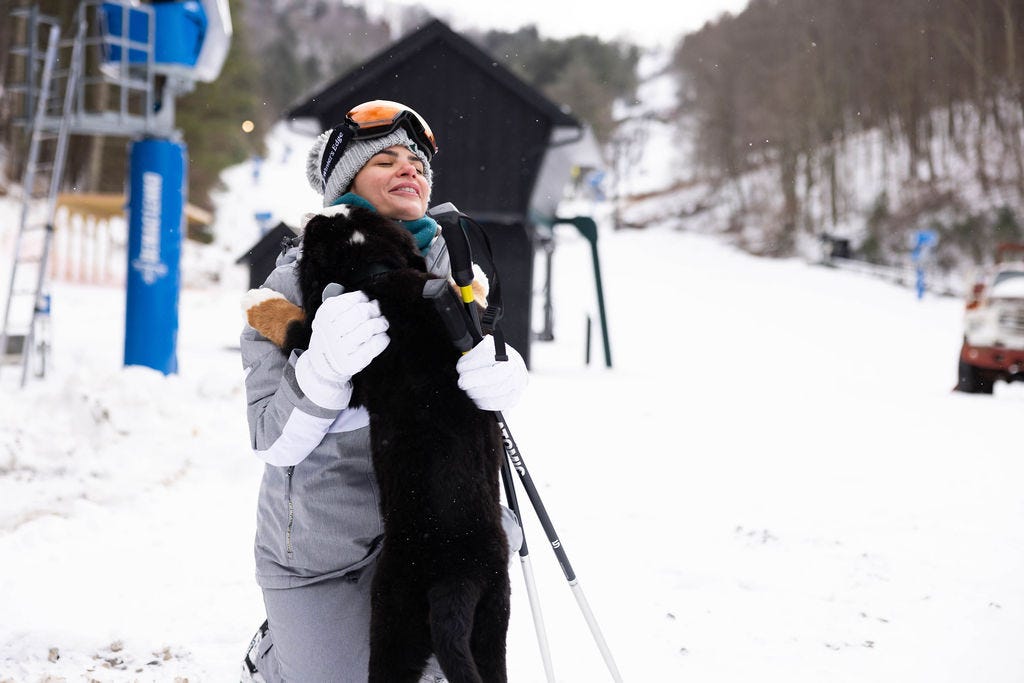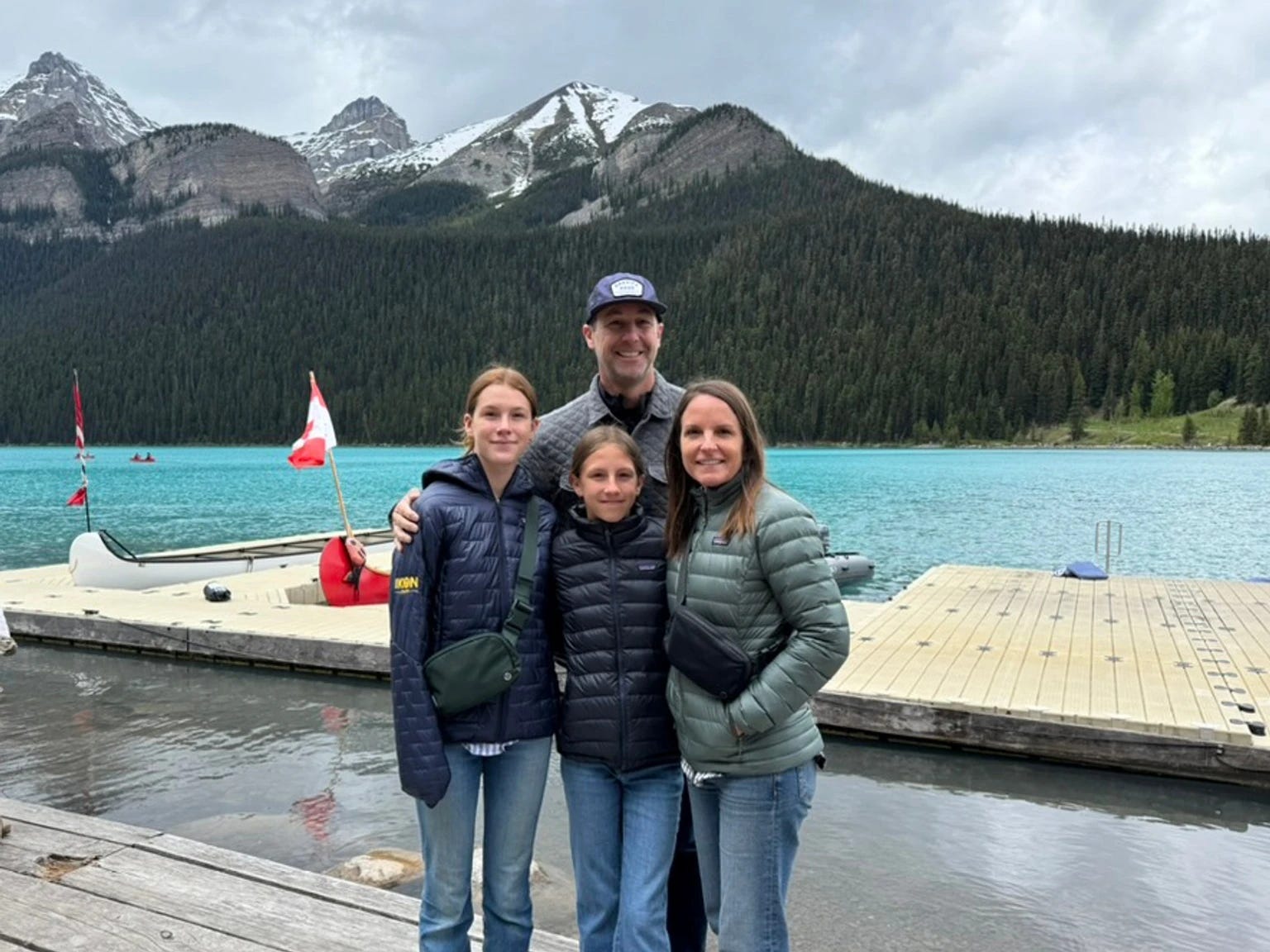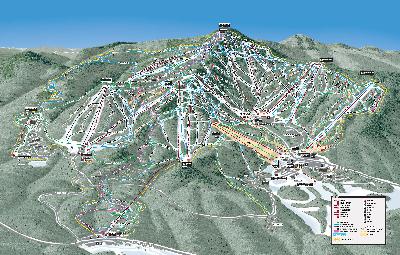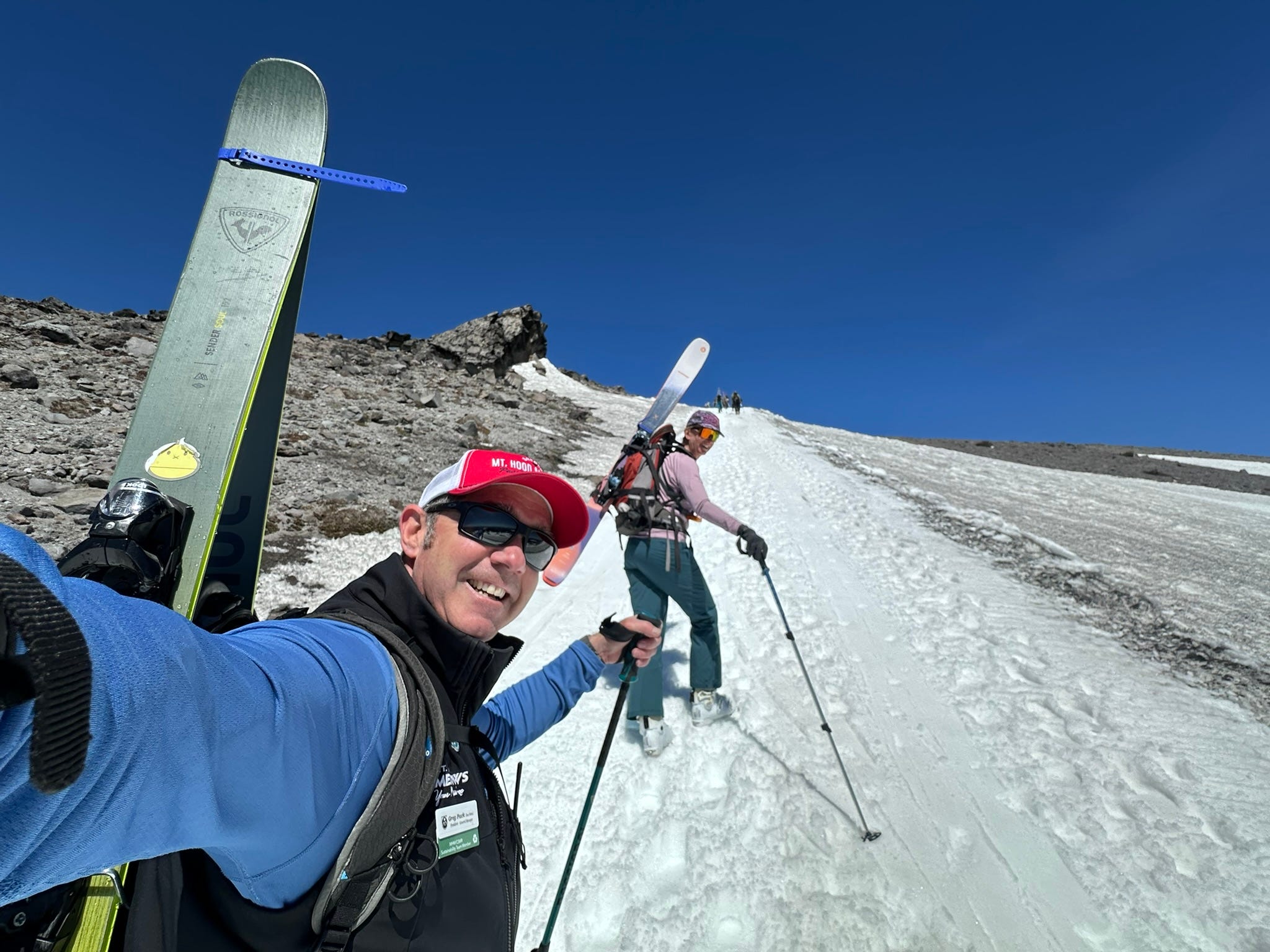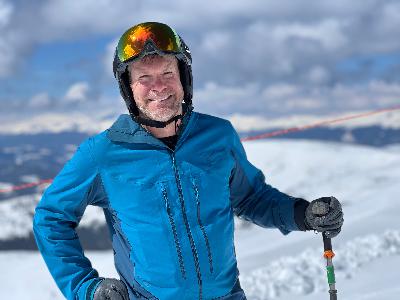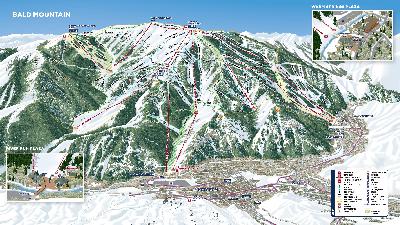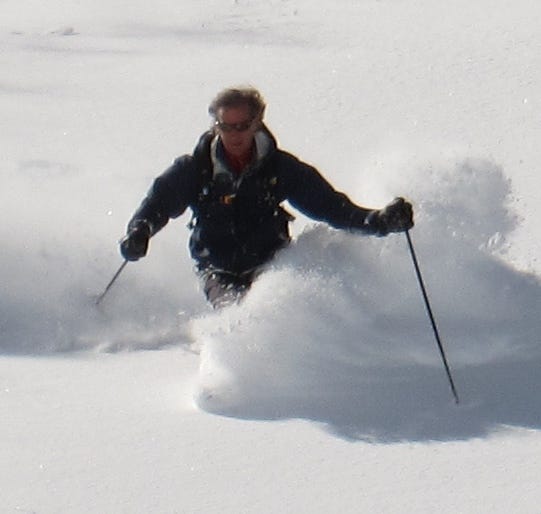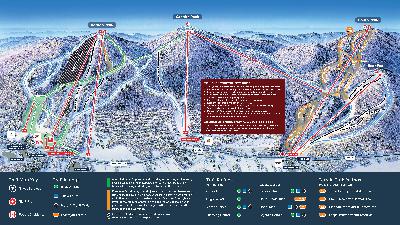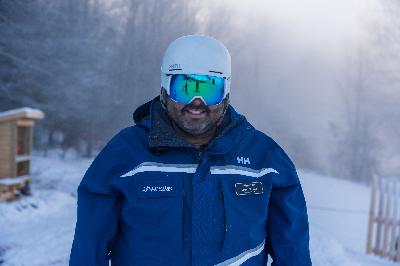Podcast #218: Hatley Pointe, North Carolina Owner Deb Hatley
Description
Who
Deb Hatley, Owner of Hatley Pointe, North Carolina
Recorded on
July 30, 2025
About Hatley Pointe
Click here for a mountain stats overview
Owned by: Deb and David Hatley since 2023 - purchased from Orville English, who had owned and operated the resort since 1992
Located in: Mars Hill, North Carolina
Year founded: 1969 (as Wolf Laurel or Wolf Ridge; both names used over the decades)
Pass affiliations: Indy Pass, Indy+ Pass – 2 days, no blackouts
Closest neighboring ski areas: Cataloochee (1:25 ), Sugar Mountain (1:26 )
Base elevation: 4,000 feet
Summit elevation: 4,700 feet
Vertical drop: 700 feet
Skiable acres: 54
Average annual snowfall: 65 inches
Trail count: 21 (4 beginner, 11 intermediate, 6 advanced)
Lift count: 4 active (1 fixed-grip quad, 1 ropetow, 2 carpets); 2 inactive, both on the upper mountain (1 fixed-grip quad, 1 double)
Why I interviewed her
Our world has not one map, but many. Nature drew its own with waterways and mountain ranges and ecosystems and tectonic plates. We drew our maps on top of these, to track our roads and borders and political districts and pipelines and railroad tracks.
Our maps are functional, simplistic. They insist on fictions. Like the 1,260-mile-long imaginary straight line that supposedly splices the United States from Canada between Washington State and Minnesota. This frontier is real so long as we say so, but if humanity disappeared tomorrow, so would that line.
Nature’s maps are more resilient. This is where water flows because this is where water flows. If we all go away, the water keeps flowing. This flow, in turn, impacts the shape and function of the entire world.
One of nature’s most interesting maps is its mountain map. For most of human existence, mountains mattered much more to us than they do now. Meaning: we had to respect these giant rocks because they stood convincingly in our way. It took European settlers centuries to navigate en masse over the Appalachians, which is not even a severe mountain range, by global mountain-range standards. But paved roads and tunnels and gas stations every five miles have muted these mountains’ drama. You can now drive from the Atlantic Ocean to the Midwest in half a day.
So spoiled by infrastructure, we easily forget how dramatically mountains command huge parts of our world. In America, we know this about our country: the North is cold and the South is warm. And we define these regions using battle maps from a 19th Century war that neatly bisected the nation. Another imaginary line. We travel south for beaches and north to ski and it is like this everywhere, a gentle progression, a continent-length slide that warms as you descend from Alaska to Panama.
But mountains disrupt this logic. Because where the land goes up, the air grows cooler. And there are mountains all over. And so we have skiing not just in expected places such as Vermont and Maine and Michigan and Washington, but in completely irrational ones like Arizona and New Mexico and Southern California. And North Carolina.
North Carolina. That’s the one that surprised me. When I started skiing, I mean. Riding hokey-poke chairlifts up 1990s Midwest hills that wouldn’t qualify as rideable surf breaks, I peered out at the world to figure out where else people skied and what that skiing was like. And I was astonished by how many places had organized skiing with cut trails and chairlifts and lift tickets, and by how many of them were way down the Michigan-to-Florida slide-line in places where I thought that winter never came: West Virginia and Virginia and Maryland. And North Carolina.
Yes there are ski areas in more improbable states. But Cloudmont, situated in, of all places, Alabama, spins its ropetow for a few days every other year or so. North Carolina, home to six ski areas spinning a combined 35 chairlifts, allows for no such ambiguity: this is a ski state. And these half-dozen ski centers are not marginal operations: Sugar Mountain and Cataloochee opened for the season last week, and they sometimes open in October. Sugar spins a six-pack and two detach quads on a 1,200-foot vertical drop.
This geographic quirk is a product of our wonderful Appalachian Mountain chain, which reaches its highest points not in New England but in North Carolina, where Mount Mitchell peaks at 6,684 feet, 396 feet higher than the summit of New Hampshire’s Mount Washington. This is not an anomaly: North Carolina is home to six summits taller than Mount Washington, and 12 of the 20-highest in the Appalachians, a range that stretches from Alabama to Newfoundland.
And it’s not just the summits that are taller in North Carolina. The highest ski area base elevation in New England is Saddleback, which measures 2,147 feet at the bottom of the South Branch quad (the mountain more typically uses the 2,460-foot measurement at the bottom of the Rangeley quad). Either way, it’s more than 1,000 feet below the lowest base-area elevation in North Carolina:
Unfortunately, mountains and elevation don’t automatically equal snow. And the Southern Appalachians are not exactly the Kootenays. It snows some, sometimes, but not so much, so often, that skiing can get by on nature’s contributions alone - at least not in any commercially reliable form. It’s no coincidence that North Carolina didn’t develop any organized ski centers until the 1960s, when snowmaking machines became efficient and common enough for mass deployment. But it’s plenty cold up at 4,000 feet, and there’s no shortage of water. Snowguns proved to be skiing’s last essential ingredient.
Well, there was one final ingredient to the recipe of southern skiing: roads. Back to man’s maps. Specifically, America’s interstate system, which steamrolled the countryside throughout the 1960s and passes just a few miles to Hatley Pointe’s west. Without these superhighways, western North Carolina would still be a high-peaked wilderness unknown and inaccessible to most of us.
It’s kind of amazing when you consider all the maps together: a severe mountain region drawn into the borders of a stable and prosperous nation that builds physical infrastructure easing the movement of people with disposable income to otherwise inaccessible places that have been modified for novel uses by tapping a large and innovative industrial plant that has reduced the miraculous – flight, electricity, the internet - to the commonplace. And it’s within the context of all these maps that a couple who knows nothing about skiing can purchase an established but declining ski resort and remake it as an upscale modern family ski center in the space of 18 months.
What we talked about
Hurricane Helene fallout; “it took every second until we opened up to make it there,” even with a year idle; the “really tough” decision not to open for the 2023-24 ski season; “we did not realize what we were getting ourselves into”; buying a ski area when you’ve never worked at a ski area and have only skied a few times; who almost bought Wolf Ridge and why Orville picked the Hatleys instead; the importance of service; fixing up a broken-down ski resort that “felt very old”; updating without losing the approachable family essence; why it was “absolutely necessary” to change the ski area’s name; “when you pulled in, the first thing that you were introduced to … were broken-down machines and school buses”; Bible verses and bare trails and busted-up everything; “we could have spent two years just doing cleanup of junk and old things everywhere”; Hatley Pointe then and now; why Hatley removed the double chair; a detachable six-pack at Hatley?; chairlifts as marketing and branding tools; why the Breakaway terrain closed and when it could return and in what form; what a rebuilt summit lodge could look like; Hatley Pointe’s new trails; potential expansion; a day-ski area, a resort, or both?; lift-served mountain bike park incoming; night-skiing expansion; “I was shocked” at the level of après that Hatley drew, and expanding that for the years ahead; North Carolina skiing is all about the altitude; re-opening The Bowl trail; going to online-only sales; and lessons learned from 2024-25 that will build a better Hatley for 2025-26.
What I got wrong
When we recorded this conversation, the ski area hadn’t yet finalized the name of the new green trail coming off of Eagle – it is Pat’s Way (see trailmap above).
I asked if Hatley intended to install night-skiing, not realizing that they had run night-ski operations all last winter.
Why now was a good time for this interview
Pardon my optimism, but I’m feeling good about American lift-served skiing right now. Each of the past five winters has been among the top 10 best seasons for skier visits, U.S. ski areas have already built nearly as many lifts in the 2020s (246) as they did through all of the 2010s (288), and multimountain passes have streamlined the flow of the most frequent and passionate skiers between mountains, providing far more flexibility at far less cost than would have been imaginable even a decade ago.
All great. But here’s the best stat: after declining throughout the 1980s and ‘90s, the number of active U.S. ski areas stabilized a

